-
Posts
4186 -
Joined
-
Last visited
Content Type
Forums
Events
Gallery
Posts posted by garyrc
-
-
12 hours ago, michaelwjones said:
I represent that too. Had a Phase 700 powering my Bozaks in the 70s...
Did you have a sub then? Or had then been invented yet? 😁
Let's see. Rudy Bozak characterized the big Bozaks as 91 dB/2.83w/1m. So did Stereophile. Let's say that is essentially correct. The 350 w.p.c. of your Phase Linear 700 should produce about 110 dB, about what is needed for an instantaneous peak in the bass, through a Bozak Concert Grand.
-
 2
2
-
-
5 hours ago, JimMeader said:
I am sure for Normal listening they will be fine, but occasionally I do like to turn it up. Right now I am using a Crown XLI 1500 which has 450 watts, which is way to much, so I keep it at 25% and use a pre-amp for volume control
Standard Levels (based on several measurements of full symphony orchestras by several labs and individuals, including PWK, THX, and Dolby):
85 dB is medium to loudish
90 to 95 dB is Loud
100 dB, in rooms our size, is about the THX standard for instantaneous peaks (about 1/4 to 1/3 of a second long) for midrange and treble.
110 dB, in rooms our size is more or less the THX standard for instantaneous peaks in the bass.
THX makes this adjustment in peak level recommendation in recognition that the complex, but early, reflections, specular and diffuse, one gets in rooms our size, make the music sound like it is about 5 dB louder than it really is to our feeble brains and ears. In a big hall or movie theater, THX would require 5 dB more.
In my room, just a bit smaller than yours, sort of acoustically dead, at 13 feet, here are the results for a single Klipschorn (converted to model AK5) which is exactly the same sensitivity as your La Scalas (105dB/2.83v/1 meter "typical" room with room gain and boundary gain; prob more like 101dB in an anechoic chamber):
Clipping is an anathema! If your tweeter is a standard K77 (or K77m or K77F or K77D) clipping can smoke it!
wts SPL
1 95 dB
2 98 dB
4 101 dB (might deliver dynamic peaks as high as 104 dB--some risk of clipping)
8 104 dB
16 107 dB
32 110 dB
64 113 dB
128 116 dB
-
 1
1
-
-
1 hour ago, WMcD said:
i l live. wmccd
1 hour ago, 001 said:.Welcome back Gil , We missed you , hope you're feeling a lot better
Indeed, welcome back. Thanks for all of your good advice and illumination over the years.
Garyrc
-
 2
2
-
-

Of course, there are other books on [serious] writing that are more
"how to, " but this one is fun and thoughtful in a Mailer way. There are chapters called, "The Turd Test," and a preface that convinced me to read it (something I almost never do), thanks to its title, "A preface with three warnings and one apology." He includes an advertisement he put together for The Village Voice for his novel The Deer Park that includes the very most scathing reviews of the novel.RELATED, and good:


[30 writers write about writing]
And one of the best books [IMO] on functioning in the arts:

-
 1
1
-
-
In my 4,300 cu ft room, with Khorns, at 13 feet away,
1 watt provides 95 dB per channel
9 watts provide the THx/Dolby spec 105 dB Peaks per channel
But
For instantaneous peaks resembling those of a very big orchestra (opera, Mahler, or Fanfare for the Common Man) I need:
32 watts for a very, very loud 110 dB, AND
128 watts for the super brief 116 dB peaks I assume are there for less than 1/8 second, but are not picked up due to SPL meter ballistics (mine is a needle type).
-
19 hours ago, Travis In Austin said:
That was all Ampex. And they knew it needed to be on for 30 minutes from the Ampex Instrumentation recorders developed for the US Navy (White Sands MR). The recorders, modulators and demodulators were all turned on at least 30 minutes before a test. The same for all NASA tests with Ampex instrumentation recorders and associated equipment.
Thanks. That Figures. I know Ampex was the Grand Honcho developing sound for the Todd-AO film process c. 1954. First, they hired JBL ("Jim Lansing," in those days) to design and make the speakers, then took over the speaker building under license from JBL, and finally used JBL in some theaters and Altec in others. At first, they used double system sound with a separate 35mm magnetic film to carry the 6 soundtracks synchronized with the 70 mm image film, then later 6 tracks, 1.25 mm each -- totaling 7.5 mm, not 5 mm, as is usually reported -- the image size was reduced very slightly to allow this. The 6 power amps (Ampex) in the projection booth I visited were 125 watts (RMS?). They were plenty loud, and well warmed up.
-
Warm-up (not break-in):
A friend of my cousin was a 70 mm projectionist in the early days of roadshow Todd-AO, with it's super dynamic, beautiful 6 channel sound. The Todd-AO people (Magna? Ampex? JBL?) specified that the sound equipment be warmed-up for 30 minutes. Back then, the amplifiers were tube types.
-
 1
1
-
-
19 hours ago, Tom05 said:
A friend of mine had a subscription to Consumer Reports years back , they pretty much picked speakers by frequency response graphs. It’s amazing how the room interacts , even a few feet can make a huge difference at certain frequency’s.Its interesting to walk around a room with a meter while playing test tones.
Consumer Reports has a long history of enshrining frequency response as the primary way to judge loudspeaker quality. This was true since at least 1959, when their loudspeaker issue called the acoustic suspension AR-1 the best speaker (but adding an outboard tweeter was recommended). It sounded muddy to the 14 year old me. Didn't these guys ever hear of distortion? Dynamics? At the Hi Fi fair that year, the favorites of my little group of 6 early teenagers, most of whom played in the H.S. orchestra every day, and some of us in the band, too, were the JBL Paragon

 (clean as a whistle, but could have more bass), The Klipschorn
(clean as a whistle, but could have more bass), The Klipschorn some big EVs
some big EVs  ?, and for those who liked softer edges, and very pretty sound, the big Bozaks
?, and for those who liked softer edges, and very pretty sound, the big Bozaks  One poor guy liked Consumer Report's favorite, the AR
One poor guy liked Consumer Report's favorite, the AR  , and was met with polite incredulity by the others. He didn't play in the orchestra, and had rarely gone to live concerts. Meanwhile Consumer Reports, loving it, said it needed 22 times the amplifier power as the JBL D130 (in the midrange) "to produce a reasonably loud sound." The D130 had the same sensitivity (or "efficiency," as we called it then) as a Klipschorn (in the midrange, only). Memory lane.
, and was met with polite incredulity by the others. He didn't play in the orchestra, and had rarely gone to live concerts. Meanwhile Consumer Reports, loving it, said it needed 22 times the amplifier power as the JBL D130 (in the midrange) "to produce a reasonably loud sound." The D130 had the same sensitivity (or "efficiency," as we called it then) as a Klipschorn (in the midrange, only). Memory lane.
-
 2
2
-
 3
3
-
-
3 hours ago, ClaudeJ1 said:
No speaker company EVER puts IM distortion in their specs because the numbers would be too Gross to publish!
One did. Guess which?
If I remember correctly, the spec sheet said:
Klipschorn, at 100 dB, Total Modulation Distortion = 1%
Cornwall, at 90 dB, Total Modulation Distortion = 3%
With identical drivers, the difference might be attributed to horn loaded v.s. direct radiator woofers, and possibly partly to the different midrange horn. I'm only guessing that the measurements were taken at 1 meter. Could be wrong.
Would someone with the old spec sheets (from the 1970s, I think), please check this? My memory for material read about 45 years ago is not infallible. Thanks!
Also, I found some of my notes from a review in about 1986 in which the Khorn, at 100 dB, with an input of Middle C mixed with 41 Hz, produced 0.9% IM. How close to the spec sheet could it be?
How about the one, often revealed, that really is not nearly as important as IM, namely THD in the bass range? At 100 dB, the reviewer got for the AR9-8LS (considered a good to excellent speaker by middlebrow dealers) 11%. For the Klipschorn, also at 100 dB ... 0.5%
And so it goes.
-
 1
1
-
 2
2
-
-
17 hours ago, Idontknow said:
I don’t think everything Bose made sounded bad.
With a very powerful amp (>350 w.p.c.) and good positioning, the 901 can sound good. All 901s I've ever heard sounded pretty bad, except at Alphonso's Mercantile in Mendocino Village, starting in 1972 with a Phase Linear 700, moving up through the years with a parade of big amplifiers, ending up with a 1,000 watt per channel McIntosh (Alphonso is gone now). The super secret sensitivity (with required equalizer, etc.) of the 901 is so low that a Klipschorn, La Scala or Belle is about 22 times as sensitive.
-
 1
1
-
-
The secret to manufacturers' success and the perceived efficacy of things like the 'High End Novum PMR Premium Mk.II - Room Acoustic Resonator" is a collection of magic words written by guys like this:

Don Draper
Magic words like "quantum," "sweetens," "clarifies," "focus," "definition," and "tunneling" (which taps unconscious memory traces of Roto Rooter and High Colonic to clean that cable right out).
It happens I may help market a sound enhancement supplement, but I don't have a Don Draper, so I'll just describe it, and hope nobody can uncover the trade secrets that make it work so well.
"Do you long for more enjoyable sound from your stereo system? The problem is a lack of the radiant fire, splendor and tenderness that we sometimes hear with live music. Also, while many people who allow themselves to become absorbed in music played on their stereo system have a vivid memory of the beginning and ending of a lengthy work (think a symphony or an oratorio), there is what we call the Glanzer, Cunitz, Atkinson, and Shiffrin (in their honor) memory GAP for the middle part of the selection. Take our supplement, Sforzando, 15 minutes before listening and feel your cortical arousal increase just before the beginning of the music, and enhance the hippocampal response, so the music seems to glow. In addition to proprietary ingredients obtained from Aplysia and other sea slugs, we include two of the Earth's most beneficial and easily assimilated nutrients (C21H30O2 and C8H10N4O2 ). All of these provide maximum clarity and definition of stereo music reproduction, as well as enhancing memory of music (even the middle parts). Listeners will no longer have to sit in the "sweet spot" for optimum enjoyment; with the proper dose of our supplement, you'll be happy anywhere in the room.
There is an optimum level of arousal and other brain states for the enjoyment of music, and detailed perception of the imaging, sound staging, clarity, as well as effortlessness and high dynamics. As an example, the very middle of the following curve is the optimum arousal level for enjoyable and high memorability music listening.
Enjoyment/Memorability

Cortical Arousal Either too low or too high a level of arousal lessens the pleasure. Sforzando will provide the correct amount of each nutrient to produce the optimum brain state to enjoy music as you have never before! You'll remember it as long as you live!
Watch this space for price list, coming soon."
-
 1
1
-
 2
2
-
-
5 hours ago, tigerwoodKhorns said:
This sounds like a great idea. You know, at a concert, 89% of the sound is reflected and only 11% come in directly from the orchestra. Let's do this. We can call it 'direct / reflecting' sound.


Despite Dr. Bose, most of us (myself included) like our sound without early reflections, but, quite by accident, I used to have a room that had great "direct/reflecting" sound--with corner horns. It was this one (minus the Realtor's wide angle lens distortion):
 I know, it doesn't look great for sound, but it was. There was a big Persian rug when we owned it. I was very sad to sell it.
I know, it doesn't look great for sound, but it was. There was a big Persian rug when we owned it. I was very sad to sell it.

Here is a diffusor:

I haven't been able to duplicate its beautiful, complex sound, even with a room almost exactly the same size, treated with different configurations ranging from very live to very dead. (P.S. My parents originally designed the house, and my dad built it. When he was almost done, every member of the family drove one symbolic nail)
-
 2
2
-
-
- You could try it
- Keep careful notes and many listening trials with many recordings. It's conceivable that you may get the appearance of more bass with some recordings, and less bass with others. For instance, if a big bass drumbeat occurs on one recording, centered at about 60Hz, but having vibes (of some level or another) throughout nearly the whole audio frequency spectrum* and there is no such drumbeat on another recording, the latter recording may sound fine, but the first recording, with the drumbeat, may sound bass attenuated if 60 Hz is reduced in SPL. If that won't give you audionervosa, few things will.
- Do turn the upper speaker upside down, so from top to bottom (or bottom to top) it's Woofer,Tweeter,Tweeter, Woofer.
- Try merely turning the bass control up (hope you have one) as an alternative, or try a loudness control - rather than using a volume control - or Dynamic EQ in Audyssey, or turn up the sub, or try pushing the speakers all the way into a corner, toed in toward the main listening position, with something absorptive of mid and high frequencies on the two walls where the first bounce off of each wall will occur, to lessen early mid/high reflections. The corner option may give you as much as 6 dB more bass without costing you any watts.
-
Although comb filtering is a possibility, some of the best truly big speakers used to have multiple woofers:
 Bozak Concert Grand, http://whttp://www.audioheritage.org/images/jbl/photos/pro-speakers/thumbs/c6000-crop_small.jpgww.audioheritage.org/images/jbl/photos/pro-speakers/thumbs/c6000-crop_small.jpg http://www.audioheritage.org/images/jbl/photos/pro-speakers/thumbs/c6000-crop_small.jpg
Bozak Concert Grand, http://whttp://www.audioheritage.org/images/jbl/photos/pro-speakers/thumbs/c6000-crop_small.jpgww.audioheritage.org/images/jbl/photos/pro-speakers/thumbs/c6000-crop_small.jpg http://www.audioheritage.org/images/jbl/photos/pro-speakers/thumbs/c6000-crop_small.jpg "Jim Lansing Theatre Sound System" of 1954n(Also Manufactured as Westrex T550 and Ampex 6000C) [Five of these behind a large curved screen for Todd-AO & other 70mm]
"Jim Lansing Theatre Sound System" of 1954n(Also Manufactured as Westrex T550 and Ampex 6000C) [Five of these behind a large curved screen for Todd-AO & other 70mm]
* Bass drums (and kick drums) are untuned

-
 1
1
-
9 hours ago, geoff. said:
Ideally you would find a pair you are interested in and listen to them with familiar source material and let your own ears decide.
This is frequently heard, pretty good, advice -- but maybe there is a better, similar approach.
Let your own ears decide -- certainly!
But maybe we have selected speakers based partly on anomalies we like.
If we use (only) familiar source material, we might notice that our favorite anomaly, present when using our own speakers, is gone when heard through some other speakers, and we may miss it. "What happened to the punch in that crescendo? Or the zing and the sizzle in that cymbal crash? Or the wood sound of that cello? Or the "rosiny" sound of (solo or massed) strings, exciting friction that makes the strings "speak" . We might even mistake a favorite anomaly for reality or as having some other virtue. And real acoustical instruments do make all of the sounds mentioned above, although they probably don't sound exactly the same through our speakers, or, indeed, in any two halls.
So, why not take take a collection to our listening sessions that is composed of 50% familiar recordings and 50% recordings we have never heard, write down our reactions (like "devoid of _____" or "exciting Sfz from the _____"), and see if each pair of speakers have anomalies ("qualities") that some other pairs don't have, that are present in the unfamiliar recordings, but lost when heard through our old familiar speakers.
This all reminds me of the time, in the 1980s when I was A/B/C-ing Klipschorns v.s. Bozak Concert Grands v.s. B & W 801Fs. They all had their points, and each produced intriguing sounds that the others didn't, especially noticed with unfamiliar recordings. I ended up with Klipschorns, but they weren't the best in every way, just best in a configuration that pleased me.
"Some ears will become habituated to false sounds" -- PWK in the early '70s.
"Everyone but me and thee, and sometimes I think that even thee ..."
-
 5
5
-
-
Everything else being equal, three way speakers often have less modulation (Doppler) distortion than two way.
Doppler distortion; an excerpt from Stereophile …
“The results were intriguing. Distortion of the flute was gross at 10mm peak diaphragm displacement and not in the least bit euphonic. On the contrary, Doppler made the sound as harsh as you might expect of a distortion mechanism that introduces intermodulation products.
music signals are less revealing of Doppler distortion than this special brew. But these findings undermine the view, widely accepted in the last two decades, that Doppler distortion in loudspeakers is not something we should trouble about. Having done the listening, I side with Moir and Klipsch more than with Fryer, Allison, and Villchur on this issue—something that may come as no surprise to anyone who has heard the effects of low-level jitter and sees where the Fryer criterion appears in fig.2. .
It has often been claimed that, with a two-way speaker, there are audible benefits to using a crossover frequency below the typical 3kHz, the usual explanation being that this removes the crossover from the ear's area of greatest sensitivity. But I wonder. Perhaps this not-uncommon experience Everyone who uses a two-way speaker (me included) can take heart from the fact that most actually has much more to do with the D word. A three-way solution is potentially even better. Three-way speakers bring new design challenges, of course, in particular the need to achieve another perceptually seamless handover between drivers. But from the Doppler perspective, having a crossover for the bass driver at 400Hz or 500Hz is, unquestionably, better (https://www.stereophile.com/content/red-shift-doppler-distortion-loudspeakers-page-3)”
-
 3
3
-
-
3 hours ago, ODS123 said:
Real, live unamplified music causes fatigue - just ask the guy sitting next to the trumpet player

... or directly in front of.
3 hours ago, ODS123 said:We evolved as a species hearing nothing louder than a babbling brook or ocean waves
and thunder and volcanoes, and earthquakes, and animal roars, and pachydermic trumpeting, and some guy beating on a hollow log.
But I'm with you. When our orchestra played The Great Gate of Kiev (Kyiv), Fanfare for the Common Man, Slaughter on 10th Avenue, etc., or the the end of a Mahler or Beethoven symphony, there was some harshness and fatigue ... we peeled the paint off the walls. But there was also effortless power, and bass that hit us in the chest, belly, and feet. I can get fairly close with my Klipschorns, and could not with my old JBL 030 system ... and there is a big difference between about the same amount of fatigue as there is live, and the greater, subjectively different, kind of fatigue that comes with an unplayable CD or with my old JBL. Now that's distortion!
-
 2
2
-
-
For purity, Forte II.
If you want to experiment, you could try a Halfer type circuit.

If the front speakers are the same type as one another
and the rear are also the same type as each other, but can be different than the fronts you could use a Halfer type of circuit.
I've heard that a few solid state amps don't like this arrangement. Google it.
If the rear speakers are less sensitive ( less "efficient")move them closer to the listeners. If they are more sensitive, move them back, away from the listeners.
Since the rears are coming at you from a different location, with a different acoustical surround, and hitting the back of your outer ears, even identical speakers would sound different.
Works best with recordings with just a few, rather distant mics (e.g., with 2 mics 10 or more feet above a symphony orchestra, rather with a mic crammed down the throat of every horn.
I had this set-up in the early '70s, and was the envy of my peers. Very immersive.
**If it doesn't work, you could move the extra speakers to a different room, or sell them, or if you have PLII on your preamp or receiver, try that.
-
13 hours ago, Josh in DC said:
Hi fellow Klipsch nerds,
I'm new to Klipsch speakers - just picked up a pair of Klipsch Forte IVs that I'm really enjoying. Came across this video (https://www.youtube.com/watch?v=X12FkoQHcTg&t=1s) from the Boston Audiophile on how to dampen Klipsch horns for "better" sound. Seems quite easy and inexpensive to do.
Have others experimented with this? Any advice? Would reducing resonance actually make for a less exciting listen? Wondering why Klipsch wouldn't have dampened the horns in the factory if it clearly improved the sound for most listeners...
Thanks for your advice and sharing any experiences,
Josh
13 hours ago, CWOReilly said:I feel like I had read that it didn't help plastic horns at all.
13 hours ago, Shakeydeal said:I think this mod helped with older designs. To my ears, the newer models are much smoother in the mids. I don’t think damping the horns on a FIV would be all that beneficial. Just my take.
Welcome to the forum!
I doubt if it would help the newer ones.
New and old, they have a flange that is screwed down. In the old days, when the horns were screwed down, PWK couldn't pick up any resonance with his equipment. Even when the Forte I was premiered, one critic, having not noticed any horn distortion, said, "so much for horn distortion." But, who knows ... you might try it if you are energetic and willing. If you do, please do one only, then have someone put the two speakers next to either, cheek by jowl, almost touching, when you are out of the room and not cheating (not looking). Then return and listen extensively to each speaker one at a time. Then have your friend either reverse the speakers, or not, without telling, and then please compare the two. This would be a "single blind" experiment, so to approach a "double blind," have your confederate either leave the room before you re-enter, or wear a bag over his/her head. This would have one step less confirmation bias than what the guy on YouTube did, but, of course, is not as refined as many repeated trials with control for order effect and carry over effect.
Please let us know your results.
I suspect at least some placebo effect in the YouTube results.
By the way, IMO, the term is "damping," not "dampening." A ton of audiophiles make this mistake, including the guy on YouTube. An amplifier has a damping factor. Car and bike suspensions have damping. Some old tone arms had viscous damping. In my recollection, including in physics class, it was "damping" from when I became an audiophile (late '50s) until about 1967, when Star Trek erroneously used the term "dampening." Then, they did it again. And again. Just as when CNN mis-defined "Factoid," Orville Redenbacher corp. mis-defined "overachiever," practically every screenwriter, novelist and journalist used "subconscious," over the usually preferred "unconscious," etc., etc., the acirologie multiplied and lasted and lasted. One reason I will continue to use "damping" is that I can only too clearly visualize what an audiophile would look like while "dampening" his components.
-
 4
4
-
 2
2
-
-
14 hours ago, Dr Morbius said:
Hey garyrc, Your diagram of Khorn placements shows 60 degree angles, which I believe would be perfect, but if they are placed in corners correctly for the bass wouldn’t it be 45 degrees? ( unless some models had adjustable mid-horns ?)
Also just wondered how you knew I liked Star Trek? You are right of course!
As you say, the Khorns, if pushed into the corner properly, aim out into the room with 45 degrees on each side of the center line bisecting the 90 degree room corner. But, the distance of your Main Listening Position (MLP), from the intertweeter line, at the vertex of a triangle, determines the angle you see (hear). So,

- To be ridiculous for a moment, putting the MLP right on the line between the speakers gives you 180 degrees
- Putting your back against the rear wall at the other end of the room would give you an angle less than 60 degrees.
- It all depends on the position of the beholder. In my case, the Khorns are 13.4 feet apart, center of tweeter to center of tweeter. So, we sit about 13.4 feet away. With your 25 foot width, your tweeters might be 21.65 feet apart, which probably means that to get 60 degrees, you should shoot for 21.65 feet down the sides of the triangle, to the vertex nearest the opposite side of the room from the Khorns. This will be a little less than 21.65 feet down the room, away from the speakers. Studios traditionally tend to use this angle. It's not magic. You will be slightly off-axis. Some people like this, others do not. So ...
- You might get away with sitting closer, to be on-axis, and get even greater spaciality, even without a center speaker, but more assuredly so with a center channel.
- Naturally, room modes need to be dealt with, at least at first by ear.
- All Khorns without sealed backs need to be sealed into corners (real or artificial) with the aid of something like pipe insulation. Even with closed backs, the Khorns should be well into the corners, but can be toed in toward the listener. Even the new Khorns need boundary gain and room gain, and should not be raised off the floor. Stereophile violated all these rules, and got really terrible and invalid bass response.
- (Your) Interests, according to the Klipsch home page: Astronomy, Classic Cars, HP Lovecraft, Star Trek, Beautiful women. The Wrath of the Khan is my favorite Star Trek. For a while, in the early '70s, I worked for Optica b/c so I was somewhat interested in astronomy. We almost made a "movie of the mind" in quadraphonic sound, taking the listeners along through the mythology, history, religious aspects, and birth, life, and death of the sun, but not the corny planetarium style programs (which Optica also had for sale). We had actors, spectacular sound effects, and a full orchestra ... but the best laid plans ... it was too complicated and expensive to complete.
-
 1
1
-
FWIW, I don't have the ct125s, but the basic shape of my K77Fs (smoothed) is similar to yours, i.e., crosses the 0 line at 12.27K Hz, and is down about 4 dB at 17K Hz.

-
P.S.
If the room is going to double as a home theater (and why not?), I recommend an acoustically transparent screen, with an aspect ratio of about 2.35:1 to accommodate almost all 12 aspect ratios. Seymour makes good ones, in a variety of custom shapes. Ours is 130" image width, but yours could be larger, and if the audience is at the tip of a 60 degree equilateral triangle, the screen could either be between the K-horns, or in front of them, filling the entire wall, where few have gone before. We can fill our screen top to bottom, and whatever width the aspect ratio dictates (called "Common Height"). with all but Ultra (not Super) Panavision 70, Camera 65, and the temporary AR of CinemaScope, pre-1957, before they added more soundtracks. The felt borders of the screen make all other true widescreen (2.21:1 or greater; the measly 16:9 or 1.78:1 of most TV screens is narrower than most American narrow screen) ARs usable with no black bars top or bottom.
Since you like Star Trek, most ST movies are 2.40:1 (if you see one in 70mm, it will probably be 2.21:1). Also, the closing music of The Wrath of the Khan (during the end credits) has some of the best imaging ever (even though it has fairly thin bass). How good is it? My wife and I walked up and stood a few inches from the screen, between the Khorns, and could point at each instrument group -- no holes.
-
 1
1
-
-
60 degrees works very well for my K-horns ...

- I do often use our (modified Belle Klipsch) center speaker, though.
- Many mixing rooms use 60 degrees, but they usually have 1 (or more) center speakers.
- Whether I use the center speaker for 2 channel music listening or not depends on the imaging on the recording. Different mic patterns are alleged to make a center useful or not with a 2 channel source. We are forced to judge by ear with the 99% of recordings that don't annotate the mic pattern in the text. Of course, with multichannel SACDs, etc., or with simulated multichannel from 2 track (e.g., Pro Logic II and beyond) I use the full surround sound suite. 60 degrees is still good.
- For movies, of course, we use the full suite.
In this theater (my favorite 70mm commercial cinema, until they first put in a smaller, flat screen, and later added insult by tearing it down) the "film buff seats" in the 11 th row from the screen was about 70 degrees, and the 18 th row (for the ill-informed) was about 53 degrees.
 2 hours ago, PrestonTom said:
2 hours ago, PrestonTom said:It best not to think in term of distance, but rather in terms of angle.
-
 1
1
-
One more thing relative to my post above. I cited "quality of the recording" as one of the two most important factors in avoiding harshness and ear fatigue, at least over all of my Klipsch speakers, and my previous JBLs, as well. Format does seem to make a difference. Engineering of the recording, of course, is terrifically important. See Chris A's many posts on recording companies sometimes deliberately making recordings with limited bass, compressed dynamic range, and sometimes screechy mids and highs, as part of the industry's "Loudness Wars." He may have written some recent posts on the subject, but I remember starting with his "The Missing Octave."
Format-wise, here is what Meridian thinks. I would agree with most of it, but I think they rated reel-to reel way too low; some of the best recordings I've heard were 1st generation on Crown 1/2 track (i.e., not 1/4 track) at 15 ips, or Ampex 1/2 track at 15 ips (or even 3rd or 4th generation 35 mm Magnetic film, running at 22.5 ips, I think) but that's not on Meridian's chart). I also think they rated ordinary CDs too high.

-
 2
2
-
-
On 4/12/2022 at 10:46 PM, Moh said:
What frequencies cause ear fatigue. I thought the tweeter sounds bright/fatiguing so I decreased the trebble. But I found the Highs to sound a bit softer when I increased 16kHz on the EQ. Does this make any sense or is it a placebo effect.
- @Moh
- You may have been turning down the upper 1/3 or so of the frequency spectrum with the treble control (typically, they have their greatest effect at the top, making their over-use, to cut, result in dull sound), but turning up the 16KHz slider may have restored the much needed "air" and "richness" at the very top, increasing the gentle beauty of the music. The overtones are magic. To qualify as an overtone, a tone needs to be part of the harmonic series above the fundamental frequency of a given note. The highest note on the piano has a fundamental of 4,186 Hz. Even a piccolo or a violin doesn't normally have higher fundamentals. A range called "presence" runs from about 4KHz to 8KHz, and usually sounds great. The highest range is 8KHz to 20KHz, and is often called "brilliance" or "air."
- IMO, providing that the speakers are fairly well balanced (or made that way with EQ), most ear fatigue, especially with IM distortion, centers on about 2KHz, and ranges between about 800Hz and 3.5KHz. The "BBC dip" that they built into some of their speakers is around 2KHz, and helped make for lovely sounding speakers that (in my experience) did not cause listening fatigue, and were not harsh, despite some horrible recordings they dealt with in the 1950s and 1960s.
- Audyssey, too, for their Audyssey Reference choice, provided "midrange compensation" which was a subtle cut/dip (a bit more than a 2 dB cut) at 2KHz, or a bit higher. Chris Kyriakakis, their co-founder, and the CTO for years, said he never heard a speaker/room combination that was not improved by it. Many users on the Audyssey forum begged to differ, though, and as soon as there was an app available to remove it, while still retaining Reference's Very High frequency roll-off, they did so. Some of those users have "golden ears" loudspeakers, which cost a great deal of money, and are designed to have veiled response in the usual range of living rooms, so, for them, the dip would be a double dip. Klipsch speakers are not veiled! They are not "laid back." They tend to be "up front." So are many JBLs, Altecs, Electro-Voice, and speakers with midrange and treble horns. To me, with a good recording, and a full orchestra, they tend to sound like the orchestra would from about the 10th row, not the back of the hall.
- Speaking of recordings, they vary so much that they, and listening rooms, are the variables that make the largest difference in the sound.
-
 7
7






 , and was met with polite incredulity by the others. He didn't play in the orchestra, and had rarely gone to live concerts. Meanwhile Consumer Reports, loving it, said it needed 22 times the amplifier power as the JBL D130 (in the midrange) "to produce a reasonably loud sound." The D130 had the same sensitivity (or "efficiency," as we called it then) as a Klipschorn (in the midrange, only). Memory lane.
, and was met with polite incredulity by the others. He didn't play in the orchestra, and had rarely gone to live concerts. Meanwhile Consumer Reports, loving it, said it needed 22 times the amplifier power as the JBL D130 (in the midrange) "to produce a reasonably loud sound." The D130 had the same sensitivity (or "efficiency," as we called it then) as a Klipschorn (in the midrange, only). Memory lane.

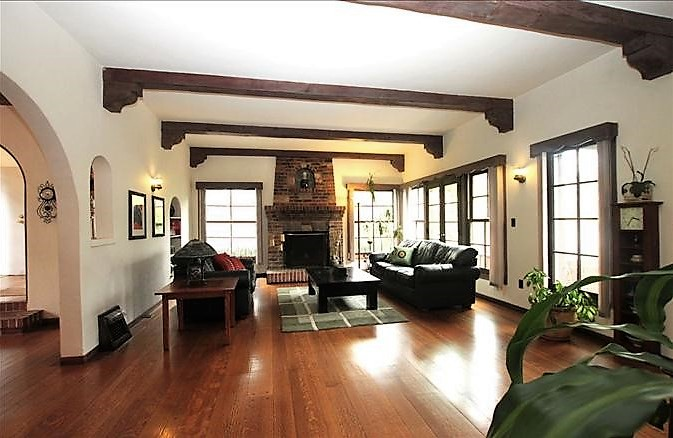 I know, it doesn't look great for sound, but it was. There was a big Persian rug when we owned it. I was very sad to sell it.
I know, it doesn't look great for sound, but it was. There was a big Persian rug when we owned it. I was very sad to sell it.
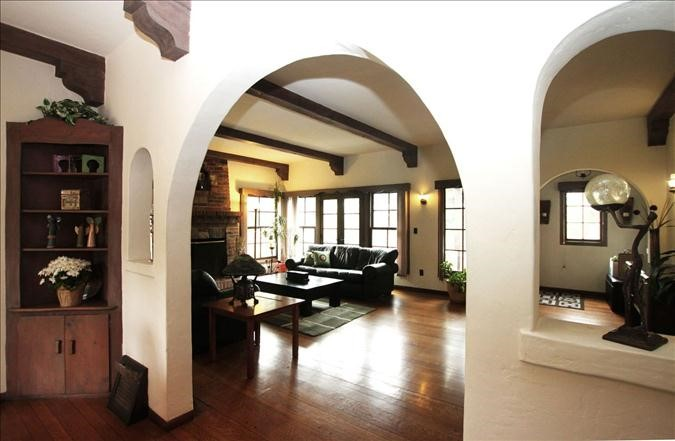

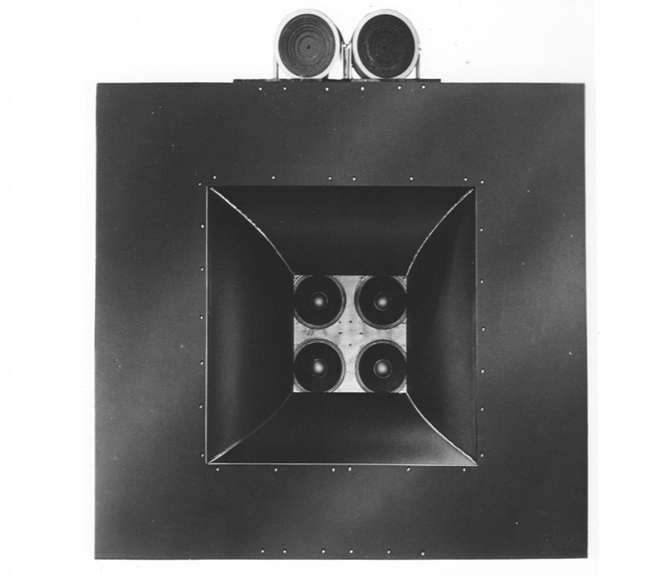 "Jim Lansing Theatre Sound System" of 1954n(Also Manufactured as Westrex T550 and Ampex 6000C) [Five of these behind a large curved screen for Todd-AO & other 70mm]
"Jim Lansing Theatre Sound System" of 1954n(Also Manufactured as Westrex T550 and Ampex 6000C) [Five of these behind a large curved screen for Todd-AO & other 70mm]
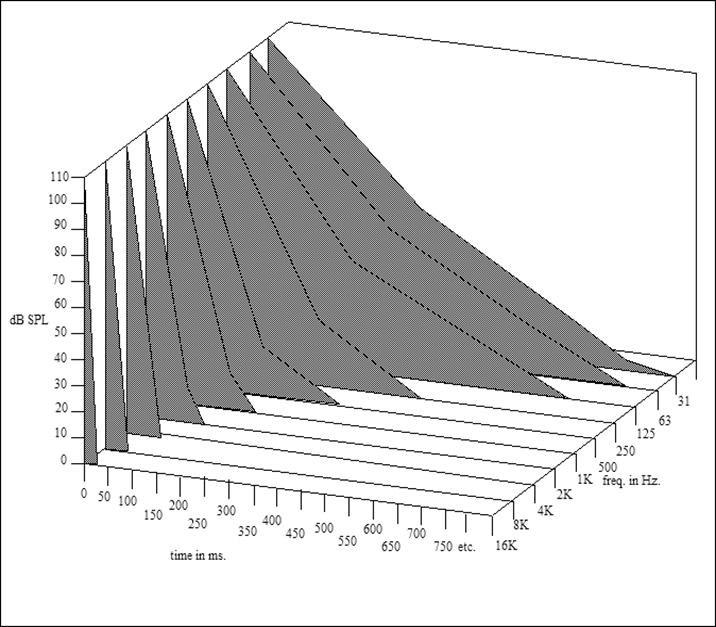
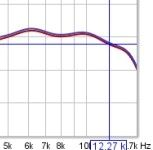
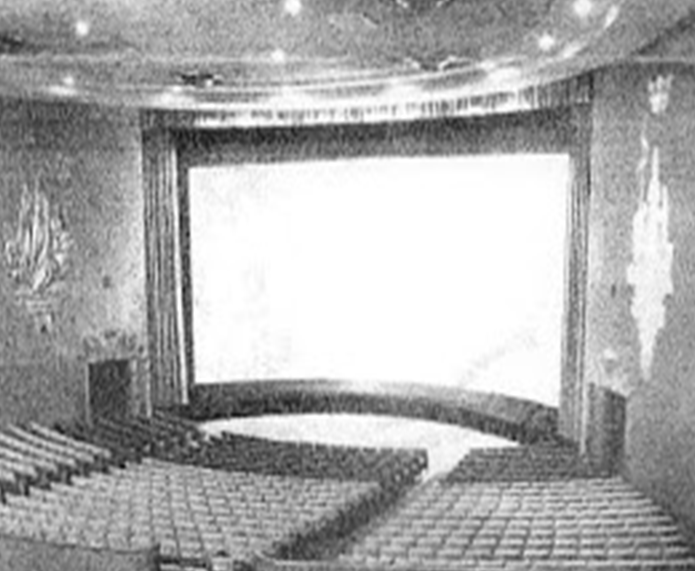
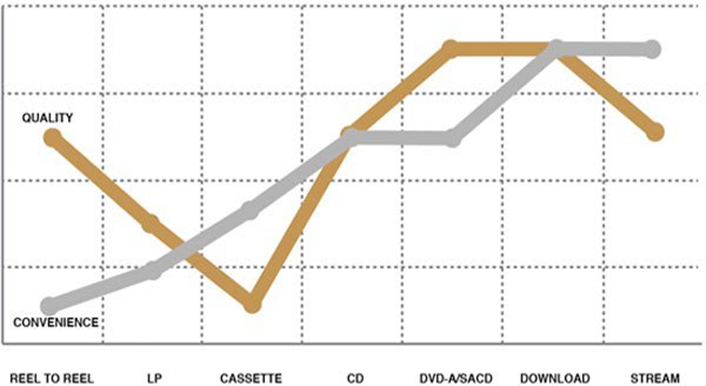
1986 AK-2 K-horns new to me.
in Technical/Restorations
Posted
Most people would probably replace the capacitors -- they may be due after 36 years. Other people can post opinions as to what are the best. The Crites people could be a source.